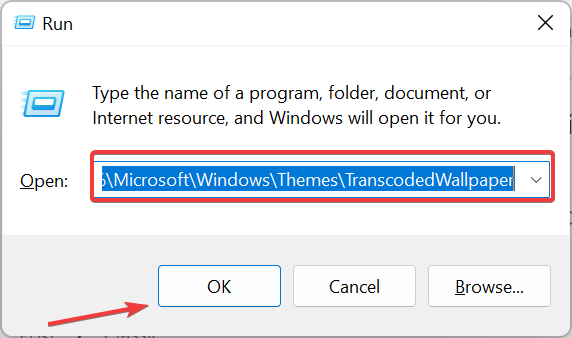前面我们已经说过了Direct-path INSERT,现在来说一下ConventionalINSERT。文章来源Oracle? Database Administrator's Guide11 g Release 2 (11.2)” Conventional and Direct-Path INSERT You can use the INSERT statement to insert data into a table, p
前面我们已经说过了Direct-path INSERT,现在来说一下Conventional INSERT。文章来源"Oracle? Database Administrator's Guide11g Release 2 (11.2)”
Conventional and Direct-Path INSERT
You can use the INSERT statement to insert data into a table, partition, or view in two ways: conventional INSERT and direct-path INSERT. When you issue a conventional INSERT statement, Oracle Database reuses free space in the table into which you are inserting and maintains referential integrity constraints. With direct-pathINSERT, the database appends the inserted data after existing data in the table. Data is written directly into data files, bypassing the buffer cache. Free space in the existing data is not reused. This alternative enhances performance during insert operations and is similar to the functionality of the Oracle direct-path loader utility, SQL*Loader. When you insert into a table that has been created in parallel mode, direct-pathINSERT is the default.
##向表,分区或者视图中插入数据,我们可以使用传统路径插入和直接路径插入两种方式。
当使用传统路径插入方式时,数据库会利用目标表中空闲空间(插入时会扫描高水位线以下,如果有空闲空间就利用,如果没有空闲空间就扩展),并且在插入过程中会维护引用的完整性约束。
当使用直接路径插入时,使用高水位线之上的块。数据绕过buffer cache被直接写入数据文件。目标表中空间空间不被使用。direct-pathINSERT的功能同direct-path loader单元SQL*Loader相似,可以提高insert操作的性能。
当你向一个并行表中插入数据时,默认使用direct-pathINSERT方式。
The manner in which the database generates redo and undo data depends in part on whether you are using conventional or direct-pathINSERT:
##数据库日志产生的方式一定程度上取决于你是使用传统路径还是直接路径查收
Conventional INSERT always generates maximal redo and undo for changes to both data and metadata, regardless of the logging setting of the table and the archivelog and force logging settings of the database.##不论表是否设置了logging模式,数据库是否启用了force logging,数据库是否启用了归档,传统路径插入方式总是会为数据好元数据的变化产生大量的redo和undo
Direct-path INSERT generates both redo and undo for metadata changes, because these are needed for operation recovery. For data changes, undo and redo are generated as follows:##直接路径插入会为元数据的改变而产生redo和undo,因为这些是进行恢复所需要的信息。对于数据的变化,其所产生的redo和undo根据下面的条件来决定:
Direct-path INSERT always bypasses undo generation for data changes.##直接路径插入不会产生undo(因为不需要靠undo来回滚)
If the database is not in ARCHIVELOG or FORCE LOGGING mode, then no redo is generated for data changes, regardless of the logging setting of the table. ##如果数据库没有被设置成归档模式,也没有被设置成force logging模式,那么不会为数据的变化产生日志,除非目标表设置了logging模式
If the database is in ARCHIVELOG mode (but not in FORCE LOGGING mode), then direct-path INSERT generates data redo for LOGGING tables but not for NOLOGGING tables.##如果被设置为归档模式,但是没有被设置我force logging,那么直接路径插入会为指定了logging的表的数据变化产生日志,如果表没有指定logging那么就不产生日志
If the database is in ARCHIVELOG and FORCE LOGGING mode, then direct-path SQL generate data redo for both LOGGING and NOLOGGING tables.##如果数据库处于归档模式,并且设置了force logging,那么不论表是否指定了logging属性,直接路径插入都会为数据变化产生日志
Direct-path INSERT is subject to a number of restrictions. If any of these restrictions is violated, then Oracle Database executes conventional INSERT serially without returning any message, unless otherwise noted:
##Direct-path INSERT有如下一些限制。如果符合下面任何一条,那么数据库会在不给任何反馈信息的情况下自动的采用串行传统路径插入
您可以在单个事务中使用多个直接路径 INSERT 语句,无论是否带有其他 DML 语句。但是,在一条 DML 语句更改特定的表、分区或索引后,事务中的其他 DML 语句就不能再进行更改。 访问该表、分区或索引。##
在 direct-pathINSERT 语句之前允许访问相同表、分区或索引的查询,但在其之后则不允许。
如果任何串行或并行语句尝试访问已在同一事务中通过直接路径INSERT 修改的表,则数据库将返回错误并拒绝该语句。
目标表不能是集群。
目标表不能包含对象类型列。
如果索引组织表 (IOT) 未分区、具有映射表或者被物化视图引用,则不支持直接路径 INSERT。
直接路径 INSERT 到索引组织表 (IOT) 的单个分区或只有一个分区的分区 IOT 中,将串行完成,即使 IOT 是在并行模式下创建的或者您指定了 APPEND 或 APPEND_VALUES 提示。然而,只要不使用分区扩展名称并且 IOT 具有多个分区,对分区 IOT 的直接路径 INSERT 操作将遵循并行模式。
目标表上不能定义任何触发器或引用完整性约束。
目标表无法复制。
包含直接路径 INSERT 语句的事务不能分布式。
直接路径插入数据插入完成后无法立即查询或修改。如果您尝试这样做,则会生成 ORA-12838 错误。您必须首先发出 在尝试读取或修改新插入的数据之前执行 COMMIT 语句。
另请参阅:
Oracle 数据库管理员指南,了解 direct-pathINSERT 的更完整描述
Oracle Database Utilities 有关 SQL*Loader 的信息
Oracle 数据库性能调优指南,了解如何调优并行的信息 直接路径INSERT
使用传统插入来加载表格
在传统的 INSERT 操作期间,数据库会重用表中的可用空间,将新插入的数据与现有数据交错。在此类操作期间,数据库还维护引用完整性约束。不像 直接路径INSERT操作,常规INSERT操作不需要表上的排它锁。
其他一些限制适用于直接路径 INSERT 操作,但不适用于传统 INSERT 操作。看 Oracle 数据库 SQL 语言参考,了解有关这些限制的信息。
您可以使用NOAPPEND提示以串行模式或并行模式执行传统的INSERT操作。
以下是使用NOAPPEND提示以串行模式执行常规INSERT的示例:
INSERT /*+ NOAPPEND */ INTO sales_hist SELECT * FROM sales WHERE cust_id=8890;
以下是使用 NOAPPEND 提示以并行模式执行常规 INSERT 的示例:
INSERT /*+ NOAPPEND PARALLEL */ INTO sales_hist SELECT * FROM sales;
要以并行 DML 模式运行,必须满足以下要求:
您必须安装 Oracle 企业版。
您必须在会话中启用并行 DML。为此,请提交以下声明:
ALTER SESSION { ENABLE | FORCE } PARALLEL DML;
您必须至少满足以下要求之一:
在创建时或随后指定目标表的并行属性
为每个插入操作指定 PARALLEL 提示
将数据库初始化参数PARALLEL_DEGREE_POLICY设置为AUTO
 主题背景位于 Windows 11 中的什么位置?Aug 01, 2023 am 09:29 AM
主题背景位于 Windows 11 中的什么位置?Aug 01, 2023 am 09:29 AMWindows11具有如此多的自定义选项,包括一系列主题和壁纸。虽然这些主题以自己的方式是美学,但一些用户仍然想知道他们在Windows11上的后台位置。本指南将展示访问Windows11主题背景位置的不同方法。什么是Windows11默认主题背景?Windows11默认主题背景是一朵盛开的抽象宝蓝色花朵,背景为天蓝色。这种背景是最受欢迎的背景之一,这要归功于操作系统发布之前的预期。但是,操作系统还附带了一系列其他背景。因此,您可以随时更改Windows11桌面主题背景。主题背景存储在Windo
 如何修复错误:在Java中找不到或加载主类Oct 26, 2023 pm 11:17 PM
如何修复错误:在Java中找不到或加载主类Oct 26, 2023 pm 11:17 PM由于技术错误,无法播放此视频。(错误代码:102006)本指南提供了针对此常见问题的简单修复,并继续您的编码之旅。我们还将讨论Java错误的原因以及将来如何防止它。什么是Java中的“错误:找不到或加载主类”?Java是一种强大的编程语言,使开发人员能够创建广泛的应用程序。然而,它的多功能性和效率伴随着开发过程中可能发生的一系列常见错误。其中一个中断是错误:找不到或加载主类user_jvm_args.txt,当Java虚拟机(JVM)找不到主类来执行程序时会出现这种情况。此错误充当了障碍,甚至在
 斜杠和反斜杠在文件路径中的不同使用Feb 26, 2024 pm 04:36 PM
斜杠和反斜杠在文件路径中的不同使用Feb 26, 2024 pm 04:36 PM文件路径是操作系统中用于识别和定位文件或文件夹的字符串。在文件路径中,常见的有两种符号分隔路径,即正斜杠(/)和反斜杠()。这两个符号在不同的操作系统中有不同的使用方式和含义。正斜杠(/)是Unix和Linux系统中常用的路径分隔符。在这些系统中,文件路径是以根目录(/)为起始点,每个目录之间使用正斜杠进行分隔。例如,路径/home/user/Docume
 Win11系统中“我的电脑”路径有何不同?快速查找方法!Mar 29, 2024 pm 12:33 PM
Win11系统中“我的电脑”路径有何不同?快速查找方法!Mar 29, 2024 pm 12:33 PMWin11系统中“我的电脑”路径有何不同?快速查找方法!随着Windows系统的不断更新,最新的Windows11系统也带来了一些新的变化和功能。其中一个常见的问题是用户在Win11系统中找不到“我的电脑”的路径,这在之前的Windows系统中通常是很简单的操作。本文将介绍Win11系统中“我的电脑”的路径有何不同,以及快速查找的方法。在Windows1
 如何查找Linux系统中RPM文件的存储路径?Mar 14, 2024 pm 04:42 PM
如何查找Linux系统中RPM文件的存储路径?Mar 14, 2024 pm 04:42 PM在Linux系统中,RPM(RedHatPackageManager)是一种常见的软件包管理工具,用于安装、升级和删除软件包。有时候我们需要找到某个已安装的RPM文件的存储路径,以便进行查找或者其他操作。下面将介绍在Linux系统中如何查找RPM文件的存储路径,同时提供具体的代码示例。首先,我们可以使用rpm命令来查找已安装的RPM包及其存储路径。打开
 Linux内核源代码存放路径解析Mar 14, 2024 am 11:45 AM
Linux内核源代码存放路径解析Mar 14, 2024 am 11:45 AMLinux内核是一个开源的操作系统内核,其源代码存储在一个专门的代码仓库中。在本文中,我们将详细解析Linux内核源代码的存放路径,并通过具体的代码示例来帮助读者更好地理解。1.Linux内核源代码存放路径Linux内核源代码存储在一个名为linux的Git仓库中,该仓库托管在[https://github.com/torvalds/linux](http
 在JavaFX中,有哪些不同的路径元素?Aug 28, 2023 pm 12:53 PM
在JavaFX中,有哪些不同的路径元素?Aug 28, 2023 pm 12:53 PMjavafx.scene.shape包提供了一些类,您可以使用它们绘制各种2D形状,但这些只是原始形状,如直线、圆形、多边形和椭圆形等等...因此,如果您想绘制复杂的自定义形状,您需要使用Path类。Path类Path类使用此表示形状的几何轮廓您可以绘制自定义路径。为了绘制自定义路径,JavaFX提供了各种路径元素,所有这些都可以作为javafx.scene.shape包中的类使用。LineTo-该类表示路径元素line。它可以帮助您从当前坐标到指定(新)坐标绘制一条直线。HlineTo-这是表
 Python 3.x 中如何使用os.path模块获取文件路径的各个部分Jul 30, 2023 pm 02:57 PM
Python 3.x 中如何使用os.path模块获取文件路径的各个部分Jul 30, 2023 pm 02:57 PMPython3.x中如何使用os.path模块获取文件路径的各个部分在日常的Python编程中,我们经常需要对文件路径进行操作,例如获取路径的文件名、文件目录、扩展名等等。在Python中,可以使用os.path模块来进行这些操作。本文将介绍如何使用os.path模块来获取文件路径的各个部分,以便更好地操作文件。os.path模块提供了一系


热AI工具

Undresser.AI Undress
人工智能驱动的应用程序,用于创建逼真的裸体照片

AI Clothes Remover
用于从照片中去除衣服的在线人工智能工具。

Undress AI Tool
免费脱衣服图片

Clothoff.io
AI脱衣机

AI Hentai Generator
免费生成ai无尽的。

热门文章

热工具

ZendStudio 13.5.1 Mac
功能强大的PHP集成开发环境

适用于 Eclipse 的 SAP NetWeaver 服务器适配器
将Eclipse与SAP NetWeaver应用服务器集成。

EditPlus 中文破解版
体积小,语法高亮,不支持代码提示功能

DVWA
Damn Vulnerable Web App (DVWA) 是一个PHP/MySQL的Web应用程序,非常容易受到攻击。它的主要目标是成为安全专业人员在合法环境中测试自己的技能和工具的辅助工具,帮助Web开发人员更好地理解保护Web应用程序的过程,并帮助教师/学生在课堂环境中教授/学习Web应用程序安全。DVWA的目标是通过简单直接的界面练习一些最常见的Web漏洞,难度各不相同。请注意,该软件中

Atom编辑器mac版下载
最流行的的开源编辑器






